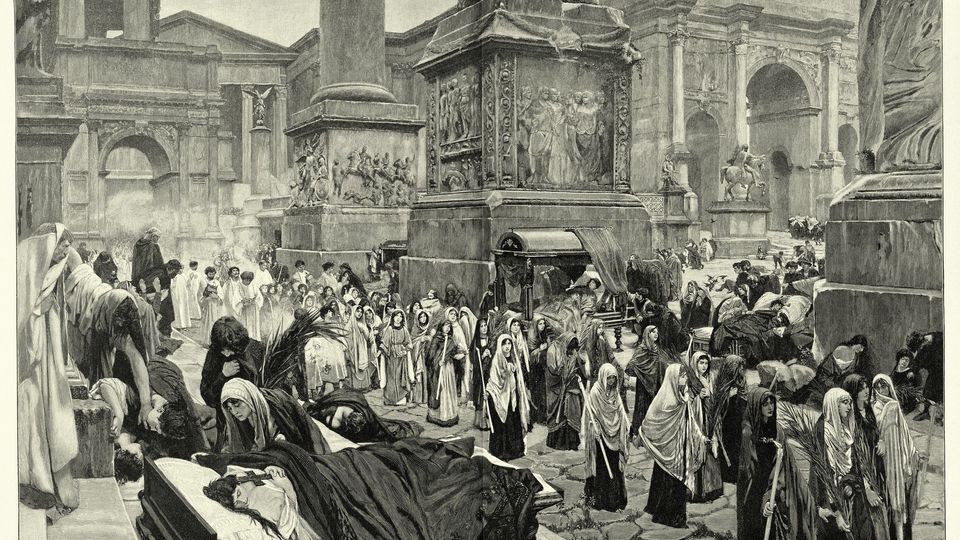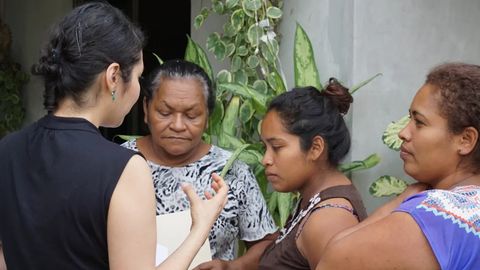What Are We Still Learning About Ancient Pathogens and Diseases?
From viruses trapped in permafrost to the 1918 flu pandemic; what are we still learning about ancient pathogens?

Complete the form below to unlock access to ALL audio articles.
Paleopathology, paleovirology and molecular biology are helping to shed light on the complex history of ancient pathogens and diseases. These efforts are supported by sophisticated techniques, such as next-generation sequencing, which allow scientists to analyze ancient DNA (aDNA) samples that are often thousands of years old.
Insight into the history of human–pathogen interactions, how different societies responded to disease and the origin of pathogens supports our understanding of human health and evolution. It might even help enhance our preparation for emerging diseases.
Let’s explore what we’re still learning about ancient pathogens and diseases.
A complicated picture of life and death during the 1918 pandemic
The 1918 influenza, also referred to as the “Spanish flu” killed an estimated ~50 million people worldwide. Because so many people were falling ill with the disease so quickly, it appeared as though the disease had a high mortality rate in young adults.
Research supporting the notion that the 1918 influenza pandemic did not discriminate between the young, healthy, sick or frail has largely relied on historical documents. Life insurance records, census data and vital statistics had been analyzed, but they failed to capture data on pre-existing medical conditions, or other factors such as a patient’s environment or diet. A recent study published in PNAS turned that notion on its head; the 1918 flu pandemic did not disproportionately kill healthy and young people.1
The study was led by Dr. Amanda Wissler, an assistant professor in the Department of Anthropology at McMaster University, and the team analyzed 369 skeletal remains from individuals that passed away between 1910–1938.
The remains were divided into two categories: people who died during the pandemic and people who died before the pandemic as a control group. The researchers searched the shinbones of the remains for lesions – regions of bone that are damaged or changed – that can be triggered by infection. By understanding whether a lesion was active or healed by the time of the person’s death, Wissler and colleagues could decipher whether an individual was suffering from underlying health issues – i.e., they could get an insight into their frailty.
“The results suggest that frail or unhealthy individuals were more likely to die during the pandemic than those who were not frail. During the flu, the estimated hazards for individuals with periosteal lesions that were active at the time of death were over two times higher compared to the control group,” the research team says.
“The results of our work counter the narrative and the anecdotal accounts of the time,” adds Wissler. “This paints a very complicated picture of life and death during the 1918 pandemic.”
A new understanding of disease origins in the Americas
During the Colonial period, millions of individuals from the West Coast of Africa were enslaved and forced to work as laborers in the Americas. Professor María del Carmen Ávila Arcos leads the International Laboratory for Human Genome Research in Querétaro, Mexico. Here, her research group analyzes aDNA and samples from modern-day populations, exploring the genetic history of understudied populations such as Indigenous and Afro-Mexican peoples.
Invasions of the Americas by colonists resulted in the death of Native populations on a large-scale, both from massacre and disease. Understanding the landscape of disease that these populations were exposed to is a crucial application of ancient DNA (aDNA) analysis for Ávila Arcos. Recently, her team successfully extracted and sequenced viral DNA from skeletal remains that had been discovered in mass graves that dated back to the 16th century.2
The graves were located in what we know today as Mexico City. “A remarkable finding obtained from aDNA was that some African-born individuals – who were likely taken to New Spain under force as part of the transatlantic slave trade – carried some viruses: hepatitis B and human parvovirus B19, that were also of likely African origin,” Ávila Arcos says.
This data implies that some of the pathogens circulating during this time period were of African origin, challenging previous conceptions. It also highlights yet another negative impact of colonization on the Indigenous and African populations.
Ancient viruses lurk in permafrost
Peering into the past offers a deeper understanding of the challenges our ancestors faced. It can also serve as an awakening to the potential challenges that our present population, or those who come after us, may encounter in the future.
At the Aix-Marseille University School of Medicine in Marseille, Emeritus Professor John-Michel Claverie has spent many years analyzing samples of Siberian permafrost. As the temperature of our planet continues to rise, thawing permafrost releases organic matter, such as gases, that have been “trapped” for up to a million years. While these gases further contribute to global warming, a major cause for concern, Claverie’s focus centers on what else is lurking in the frozen ground.
As the permafrost thaws, it also frees cellular microbes and viruses. Claverie’s research has previously demonstrated that these pathogens, often named “zombie” viruses, remain infectious.
Earlier this year, Claverie published a study reporting the characterization of 13 new viruses that had been isolated from 7 ancient Siberian permafrost samples.3 One strain was estimated to be 48,500 years old, according to radiocarbon dating. The viruses belong to five different clades that had not previously been revived from permafrost, including Pandoravirus, Cedratvirus, Megavirus, Pacmanvirus and a new Pithovirus strain. All of the viruses were capable of infecting amoeba cells.
“It is thus likely that ancient permafrost (eventually much older than 50,000 years, our limit solely dictated by the validity range of radiocarbon dating) will release these unknown viruses upon thawing,” the researchers write.
Exactly how long the viruses might remain infectious once exposed to environmental conditions such as oxygen, heat and ultraviolet light is not known. Neither is how likely the viruses might be to encounter and infect a host organism. But, as Claveria and colleagues describe, “the risk is bound to increase in the context of global warming, in which permafrost thawing will keep accelerating, and more people will populate the Arctic in the wake of industrial ventures.”
As we continue our exploration of ancient diseases and pathogens, it becomes clear that the past holds valuable lessons. And yet, many mysteries remain, awaiting scientists to unravel them.
References:
1. Wissler A, DeWitte SN. Frailty and survival in the 1918 influenza pandemic. PNAS. 2023;120(42):e2304545120. doi: 10.1073/pnas.2304545120
2. Guzmán-Solís AA, Villa-Islas V, Bravo-López MJ, et al. Ancient viral genomes reveal introduction of human pathogenic viruses into Mexico during the transatlantic slave trade. Perry GH, Guerra Amorim CE, Houldcroft CJ, eds. eLife. 2021. doi: 10.7554/eLife.68612
3. Alempic J-M, Lartigue A, Goncharov AE, Grosse G, Strauss J, Tikhonov AN, Fedorov AN, Poirot O, Legendre M, Santini S, et al. An update on eukaryotic viruses revived from ancient permafrost. Viruses. 2023. doi: 10.3390/v15020564





